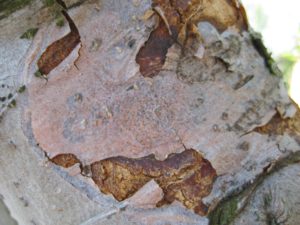
Fig. 1 Fruitlet mummies left over from thinning provide an excellent reservoir for pathogens to infect developing fruit
“During the past few years considerable complaint has been made in this state of the loss of apples through rotting.” George P. Clinton, 1902.
It’s been quite a season for rot. High temperatures, coupled with regular rains created a perfect storm of summer rots. If you were one of the orchards with problems, you need to start thinking about what you are going to do differently next year.
Black Rot: One square inch of cankered wood can produce over two million spores. 2,000,000! No protective or thorough spray can compensate for poor sanitation practices! These cankers appear on dying wood (2016 fire blight infections, opportunistic infection due to wind damage, or herbicide injury). Another great source of inoculum are windfalls, and mummies—even little mummies of thinned fruit! Black rot inoculum can be found on buds as early as October(!), just waiting for next spring. With the primary source of inoculum for bud infestation already in the tree, good sanitation is essential for effective management for next year.
White Rot: One of the worst outbreaks ever described on apples occurred in southern Indiana, in 1951. White rot seems to be of increasing importance in the last few years. Wounding plays a major role in this disease, although infection through lenticels may also be an issue. Temperature plays a role as well, with higher incidence of disease when temps exceed 85 degrees F. Most reports have been on Honeycrisp; other cultivars reported to be experiencing upticks in white rot include Blondee and Pristine. I am curious if brown marmorated stinkbug might be exacerbating the white rot incidence, or if this year’s outbreak is due to the weather alone.
Bitter Rot: Historically, this was thought to be a southern disease of apples. Changes in climate has increased both the incidence and the severity of this disease in Indiana. The bitter rot fungus can also infect leaves and cause cankers on the tree; the fungus survives the winter in dead wood and in mummified fruit that hangs on the tree. There are no estimates as to how many spores can be found in an inch of wood. My onageristic estimate is millions to billions.
To manage all the summer rots in your orchard, remove windfalls, remove old fire blight cankers and all dead wood from your orchard. This needs to be disposed of, burned, or at the very least, flail-mowed into oblivion (or less than 1.25” long). More important (and just as difficult) is removing apple mummies from the tree from the previous season. The infected limbs, branches and twigs, along with the mummies serve as a primary inoculum source to start this cycle all over again next year, if environmental conditions are conducive. All of these rots are best managed by applying mancozeb with the early sprays until the last possible time permitted by pre-harvest intervals; after, Keith Yoder demonstrated excellent rot control using ziram 76DF+captan80WDG at 3lbs+30 oz . Apply fungicides as needed, which may be more often if rains are frequent, or exceed more than 2”. The fungicides Pristine, Merivon, and Luna Sensation (all are FRAC Groups 7 + 11) are excellent for controlling bitter rot and offer protection against black and white rot. To reduce the risk of resistance, alternating a fungicide with another FRAC Group is encouraged, namely captan or ziram. Summer fungicide applications should not be extended beyond 14-day intervals. This is a disease that must be controlled in the field; postharvest fungicides will not prevent or delay rot from infections that occurred in the field.
It’s important to recognize that there are certain things that we can’t control, like heavy rains and heat stress. By focusing on what you can (timely fungicide applications, good sanitation, good tree architecture to allow good fungicide coverage) you can reduce disease incidence, even when environmental conditions are conducive to summer rots. Working on proper sanitation and pruning to open the canopy over the winter months will reduce inoculum, improve coverage and most importantly, provide better quality and yields for next year’s harvest.

